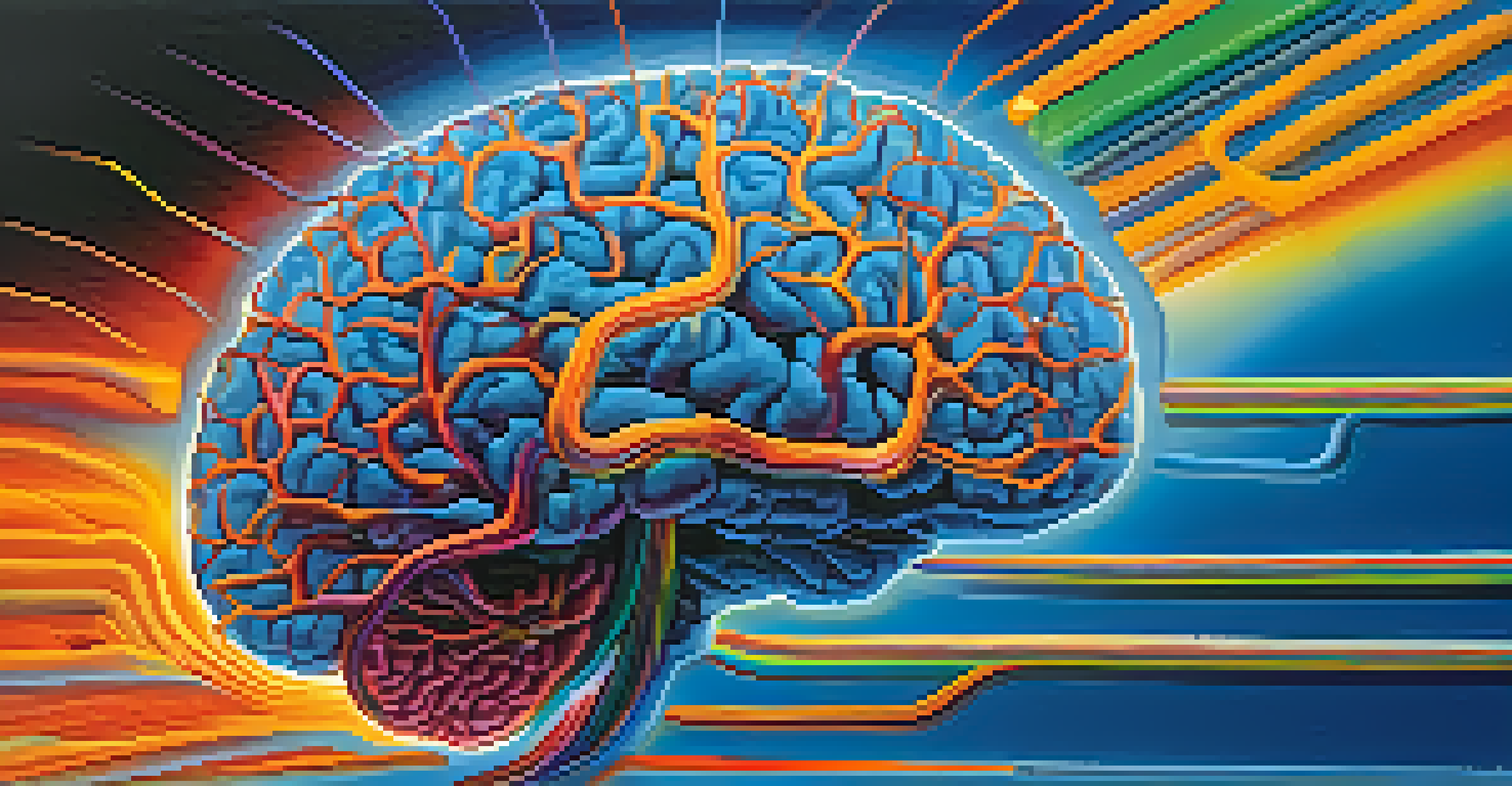Psychedelics and Neuroplasticity: A Dual Perspective

Understanding Psychedelics: A Brief Overview
Psychedelics are substances that alter perception, mood, and cognitive processes. Common examples include LSD, psilocybin, and ayahuasca. These compounds have been used historically in various cultures for spiritual and therapeutic purposes.
Psychedelics can help us transcend the limitations of the mind and connect with deeper aspects of our consciousness.
In recent years, there's been a resurgence of interest in psychedelics, especially within the scientific community. Researchers are exploring their potential to treat mental health conditions like depression and PTSD. This revival is fueled by new studies that suggest psychedelics can induce profound changes in thought patterns and emotional responses.
Understanding how psychedelics work is crucial for discussing their impact on neuroplasticity. These substances interact with the brain's serotonin receptors, leading to altered states of consciousness and, potentially, changes in neural pathways.
What is Neuroplasticity? A Simple Explanation
Neuroplasticity refers to the brain's ability to reorganize itself by forming new neural connections throughout life. Think of it as the brain's way of adapting to new experiences or learning new skills. This adaptability is essential for recovery from brain injuries and for learning.

There are two main types of neuroplasticity: functional and structural. Functional plasticity allows the brain to move functions from damaged areas to undamaged ones, while structural plasticity involves physical changes in the brain's structure in response to learning or experience.
Psychedelics Enhance Neuroplasticity
Research indicates that psychedelics can promote neuroplasticity, leading to lasting changes in brain function and structure.
This concept is vital when considering the effects of psychedelics. By potentially enhancing neuroplasticity, these substances could help individuals break free from rigid thought patterns and foster new ways of thinking.
The Link Between Psychedelics and Neuroplasticity
Research suggests that psychedelics may promote neuroplasticity, leading to lasting changes in the brain. Studies indicate that these substances can increase brain-derived neurotrophic factor (BDNF), a protein linked to the growth and survival of neurons.
The brain is capable of remarkable change. Neuroplasticity allows us to adapt and heal in ways that were once thought impossible.
When BDNF levels rise, the brain becomes more capable of forming new connections and pathways. This could explain why individuals report transformative experiences during psychedelic sessions, as they may emerge with new perspectives and insights.
This connection between psychedelics and neuroplasticity opens up exciting possibilities for mental health treatments. By harnessing the brain's adaptability, psychedelics might help individuals overcome entrenched patterns of thought and behavior.
Therapeutic Applications of Psychedelics
Psychedelics are being studied for their potential to treat a variety of mental health conditions. For example, psilocybin has shown promise in alleviating symptoms of depression and anxiety, especially in patients who have not responded to traditional treatments.
In clinical settings, guided psychedelic therapy often involves structured sessions where patients explore their thoughts and emotions. This process can lead to significant insights and emotional breakthroughs, aided by the neuroplastic changes induced by the substance.
Therapeutic Uses of Psychedelics
Psychedelics are being studied for their potential to treat mental health conditions like depression and anxiety, often resulting in significant emotional breakthroughs.
As research continues to evolve, the therapeutic applications of psychedelics may expand further. The key lies in understanding how these substances can help rewire the brain in beneficial ways.
The Risks and Considerations of Psychedelic Use
While the potential benefits of psychedelics are exciting, there are also risks to consider. Not everyone reacts positively to these substances, and experiences can sometimes lead to anxiety or distress. This is why controlled environments and professional guidance are crucial.
Moreover, psychedelics can interact with pre-existing mental health conditions, potentially exacerbating symptoms. It's essential for individuals to be aware of their mental health history before considering psychedelic experiences.
Understanding these risks is part of a responsible approach to exploring psychedelics. Awareness and education can help individuals make informed decisions about their mental health and well-being.
Future Research Directions in Psychedelics and the Brain
The intersection of psychedelics and neuroplasticity is a burgeoning field of research. Scientists are eager to uncover the specific mechanisms through which psychedelics influence brain function and structure. This knowledge could lead to more effective treatments for a variety of mental health issues.
Future studies may focus on the long-term effects of psychedelic use, particularly how these experiences impact neuroplasticity over time. Understanding these dynamics can help refine therapeutic practices and maximize positive outcomes.
Risks of Psychedelic Experiences
While psychedelics offer promising benefits, they can also induce anxiety and distress, making professional guidance and awareness of mental health history crucial.
As we continue to explore this fascinating relationship, it’s crucial to maintain a balanced perspective. The potential for psychedelics to enhance neuroplasticity is promising, but it must be approached with scientific rigor and ethical considerations.
Conclusion: Embracing a New Paradigm in Mental Health
The exploration of psychedelics and their relationship with neuroplasticity represents a shift in how we understand mental health treatment. By embracing these substances, we may unlock new pathways for healing and personal growth.
This dual perspective not only highlights the importance of brain adaptability but also encourages a more compassionate approach to mental health. The potential for psychedelics to foster significant change in our thought processes is a powerful reminder of the complexities of the human mind.

As we stand on the brink of a new era in mental health treatment, it's essential to remain open-minded and informed. The journey of understanding psychedelics and neuroplasticity is just beginning, and the possibilities are as vast as the mind itself.